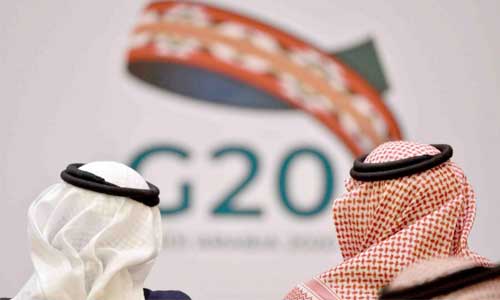The COVID-19 crisis has come at the worst possible time for humanity. The poorest countries were already struggling to meet their development goals in the face of cyclones, wildfires, and droughts, and the world now has only a decade left to slow down increases in global temperature and sea levels before they become catastrophic, and invest in climate-resilient development.
Advanced economies have the wherewithal – though not always the will – to borrow cheaply and implement inclusive green stimulus packages to build back better from COVID-19. But many emerging-market and developing countries do not, especially because their governments are spending up to 70% of their revenue on external debt service.
These countries now face a stark choice: they can spend enough to protect their citizens’ health and restart their economies, or service their debts and have virtually no resources left to tackle the pandemic and kick-start economic recovery.
In an attempt to address this problem, the G20 earlier this year established the Debt Service Suspension Initiative (DSSI), which suspended repayments on bilateral official loans for the poorest countries until the end of 2020. It later extended the initiative through mid-2021. Recognizing that these steps did not go far enough, G20 leaders adopted a framework at their virtual November 21-22 summit to go beyond debt suspension and provide actual debt relief for DSSI-eligible countries.
But although the G20’s acceptance of the need for debt relief is welcome, its new framework falls short in three ways. First, it fails to acknowledge that middle-income countries, home to eight of every ten people globally who have been pushed into extreme poverty as a result of the COVID-19 crisis, also will suffer debt distress.
Second, the framework lacks a credible plan to ensure that the private sector also plays its part in providing debt relief. And, third, the initiative will not ensure that when poorer economies restart, they embark on a green and inclusive path, with governments channeling the resources freed up by debt relief toward fulfilling the Paris climate agreement and the Sustainable Development Goals.
Today’s policymakers should avoid stimulus plans that harm both people and the planet. Several recent studies show that green investments – such as building and retrofitting homes and businesses to be more energy efficient, developing innovative green technologies, and training workers to use them – are the most likely to spur economic growth. The International Energy Agency and International Monetary Fund have reached similar conclusions, with the IMF showing that a green recovery plan that also supports households will perform much better than a conventional one.
If we continue to increase carbon dioxide emissions, there won’t be an economy to save after our climate system and natural sources of resilience have broken down for good. An economic stimulus without climate-friendly investments at its core is not a long-term investment, but rather money poured down the drain and a threat to future generations.
We therefore propose a comprehensive new debt-relief initiative focused on promoting a green and inclusive recovery. Under the scheme, poorer countries with significant debt problems – as determined by an improved debt sustainability analysis conducted by the IMF and the World Bank – would receive debt relief in exchange for a commitment to align their economic policies and newfound spending capacity with climate and development goals.
Official creditors from Europe, the United States, and China, as well as multilateral financial institutions, would offer debt relief. Private creditors would be required to swap existing debts for a smaller volume of green recovery bonds. Meanwhile, countries with more sustainable debt profiles that are experiencing pandemic-related fiscal constraints could engage in debt-for-climate or debt-for-nature swaps.
Such an initiative could be coordinated by the G20 and monitored by an inter-institutional steering committee involving public and private creditors, the United Nations, as well as civil-society representatives. Crucially, it would free up resources for climate-friendly health and stimulus spending in the middle-income and emerging economies that need it most.
Nowadays, large international creditors are eager to emphasize their commitment to climate stability.
China, now the world’s biggest bilateral creditor, recently pledged to be carbon neutral by 2060, while US President-elect Joe Biden wants America to achieve that target by 2050. Likewise, the Institute of International Finance, which represents private bondholders, says that it champions climate-mitigation efforts and environmental preservation, as well as social finance.
Rich-country leaders have a once-in-a-generation opportunity to put their money where their mouth is. Developing countries can emerge from the COVID-19 crisis and be prepared to pursue a green path to future prosperity only if their creditors adapt to the post-pandemic world. A bolder new debt-relief initiative rooted in global solidarity can help to reverse the recent increase in poverty worldwide, reduce damaging inequalities, and save our planet for future generations.
Home » Opinion » The G20 Debt Plan Does Not Go Far Enough
The G20 Debt Plan Does Not Go Far Enough
| By: Shamshad Akhtar, Kevin P. Gallagher, and Ulrich Volz

